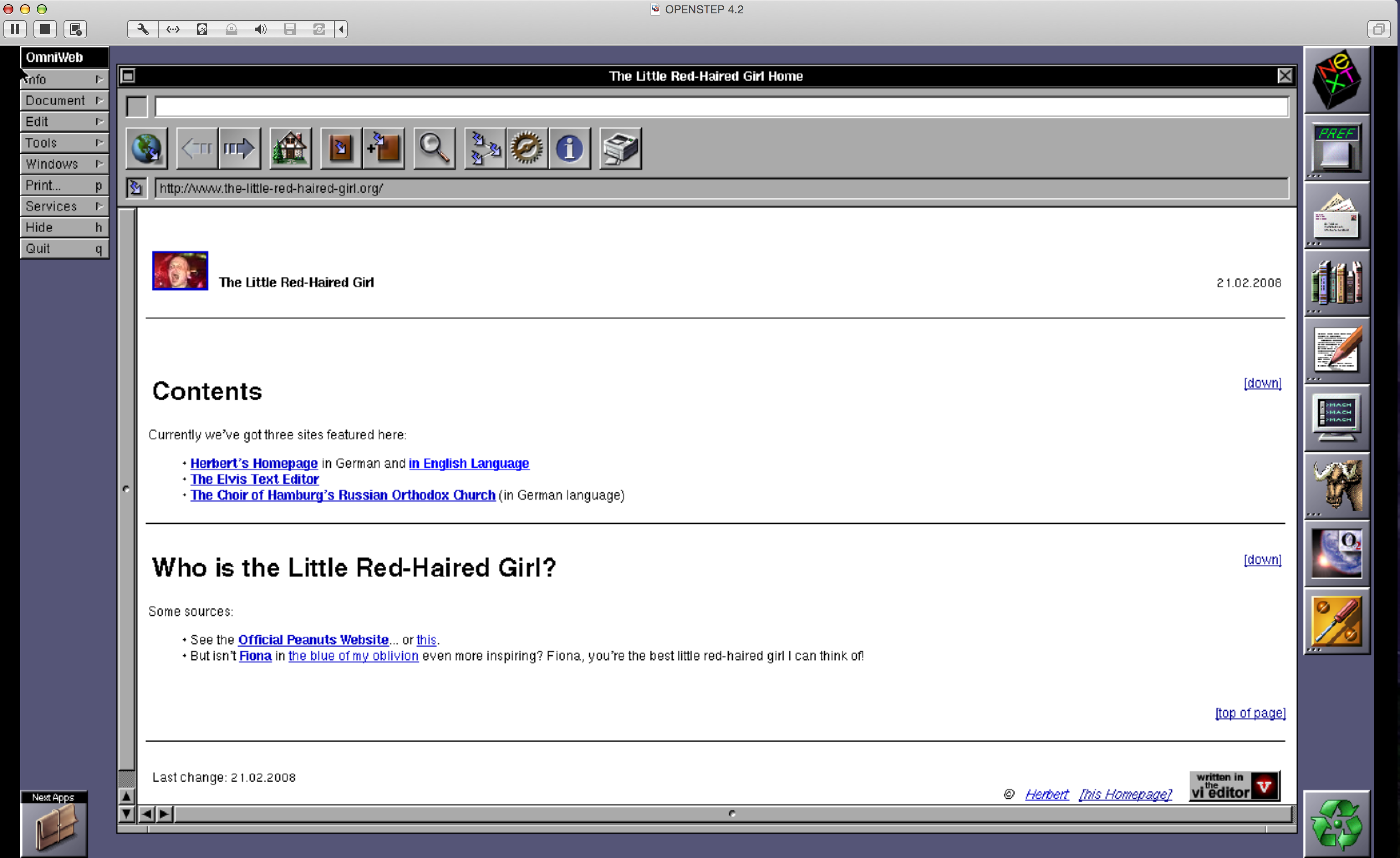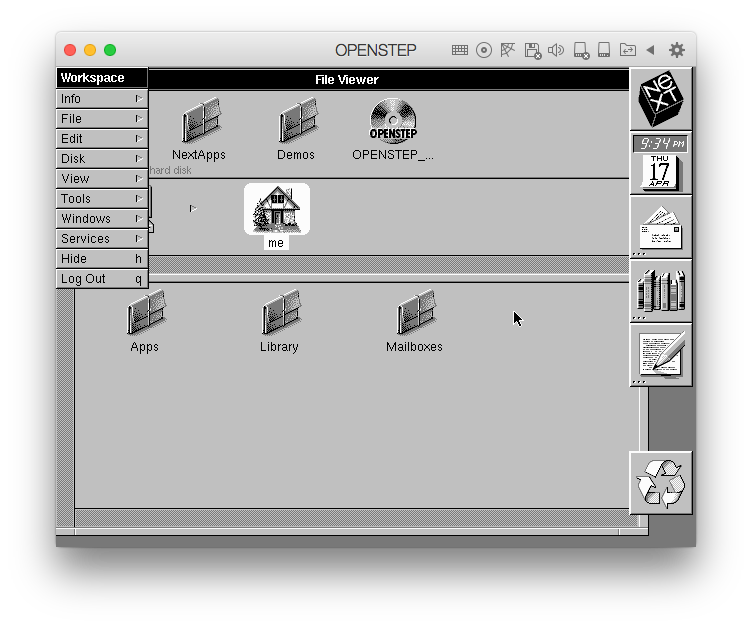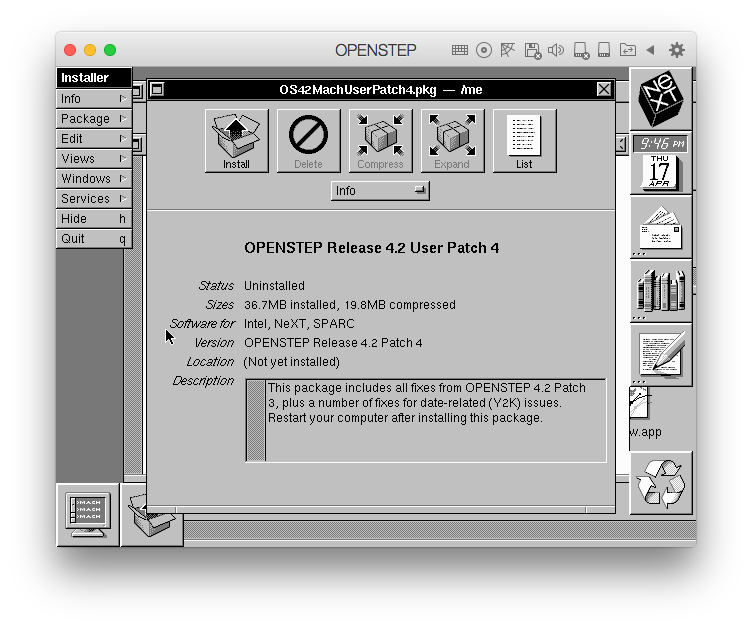To download and install OpenSees the user is required to download both the OpenSees and Tcl/Tk packages. The OpenSees and Tcl/Tk packages can both be downloaded from the OpenSees binaries webpage opensees.berkeley.edu/binaries.html. The binaries download page will be similar to that shown below. OPENSTEP for Mach supports multiple partitioned hard disks, allowing the user to install and boot several operating systems from the same local hard disk. Larger local disks are recommended for stand-alone systems or for systems with a local non-OPENSTEP for Mach partition. Install OPENSTEP, the successor of NeXTSTEP and the basis for Mac OS X, on a Virtualbox VM to see what it was like to use in the 90s. It's not particularly useful these days, but it is fun to see what it was like and how it influenced later software. Score points for authenticity by using it with an original NeXT keyboard and mouse! This section is meant to give a visual guide to the installation of both NEXTSTEP and OPENSTEP (I used NEXTSTEP for the images, but the OPENSTEP prompts are almost identical). To begin, you need a copy of the NeXTSTEP installation CD (in this case for Intel based computers) and the boot and devices floppies (if yours are damages, you can find. It should say bad magic and find the cd drive follow install instructions if done right it should find the hard drive. If you get stuck you can call me at 303 741-9998 or drop an email to sales@blackholeinc.com We have NeXTSTEP and OpenSTEP operating system and Y2k iso images.
This is my notes on installing NeXTSTEP onto Qemu. I had originally posted this on bsdnexus, however the links I had used for the graphics are nolonger working.
Please note that I’m not going to build an 'accelerated' version of Qemu, I’m trying to keep this build as 'stable' as possible. I'm going to assume you know how to use vi. I would recommend trying the 0.9.0 before you try anything else. 0.8.0 seems somewhat unstable, and the busmouse driver doesn't work on 0.9.1 .
I've tried to keep links to QEMU up to date, but official site no longer carries the old stuff so it'll probably fall into disrepair eventually.
It is worth nothing that my Pentium 3 cannot start the GUI portion. I really don’t know why. (I did try -O1 for CFLAGS)
Also with regard to the NeXTSTEP part I'm using ISO images. I have just had too many problems with the physical media.
- 1Required Downloads
- 2Busmouse patch
- 3Installation of the compiler environment
- 4Compilation
- 4.3Configuring Qemu
- 6Launching Qemu Install
Required Downloads
Download the following to c:installqemu-build
MinGW
Openstep Installation Guide Installation
from http://www.mingw.org/download.shtml
I've tried to mirror as close as I could to the versions that I built with... Since they are newer they may even work on Vista/7..
Aditional Dependancies
Qemu
Boot diskette image for NeXTSTEP
Drivers for NeXTSTEP 3.3
Busmouse patch
For Qemu 0.8.0
For Qemu 0.9.0
Installation of the compiler environment
Installation of MinGW
- Install MinGW
Choose the 'current' version, then check the following options:
- MinGW Base tools
- G++ compiler
- MinGW make
Allow it to instal into c:MinGW
Installation of MSYS
- install msys - default options
Installation of the msysDTK
- install msysDTK - default options
Installing gcc/g++ 3.4.5
Start -> run -> mingw -> msys -> msys
gcc -v should return:
Compilation
With the c compiler looking good, it's time to extract the dependancies for Qemu.
SDL
Extract and build SDL 1.2.13.
zlib
Extract and build zlib
Configuring Qemu
To compensate for qemu's configure, and some oddities in MinGW's handling of /usr/local you'll need to do some fixes..
qemu-0.8.0 NOTES
Extract Qemu and integrate the patch.
Now configure Qemu
qemu-0.9.0 NOTES
Extract Qemu and integrate the patch.
Now configure Qemu
So far this is the 'best' version of Qemu for NeXTSTEP.
qemu-0.9.1 NOTES
I've heard the reason this version will not work on Vista is something trivial:
Installing NeXTSETP
Ok now lets start with nextstep. Im going to populate a standalone copy of qemu
Lets create the 2 gig disk image..
Ok now here is the iso's that Im going to use in my c:install directory:
Ok lets get started! Im using the cmd.exe so I can paste stuff in & out. Also I copy the disk images ontop of 'disk'because some qemu hosts dont have the ctrl-alt-2 function...
Launching Qemu Install
Now let's run Qemu like this:
Step 1
I like the verbose booting so I can see what is going on.

Step 2
Step 3
Openstep Installation Guide Minecraft
Step 4
It's time to copy the core disk onto 'disk' and press enter to continue. From a 2nd cmd.exe do a :
Step 5
Time to copy the beta disk onto the 'disk' and press enter to continue. From the 2nd cmd.exe do a:
Step 6
Now this part of the disk is corrupt (its on all the beta 3.3 disks) so we have to select some scsi driver in order to get to the ATAPI. I choose #2
Step 7
Now we can proceed to the ATAPI
Step 8

Step 9
Step 10
NeXTSTEP kernel booting...
NeXTSTEP kernel booting...
Step 12
I like the advanced install. So lets go with #2
Step 13
We are going to install on the #1 (and only) disk
Step 14

Since the ne2000 currently doesnt work, I want a small partition to copy files on & off the vm.
Step 15
Lets go with 32 megabytes
Step 16
Ok looks good!
Step 17
Openstep Installation Guide Kit
Step 18
Now the disk is being partitioned & formatted. This could take a minute.
Step 19
files are being copied.
See Full List On Docs.microsoft.com
Step 20
Ok we are done here. Press enter
Step 21
Now at this point you can kill the emulator. For the sake of being 'easy' lets copy the core file back ontop of the 'disk'Now we re-launch qemu as follows:

Step 22
Again lets boot verbose
Step 23
Step 24
copy the beta onto disk.
Step 25
Step 26
copy core onto disk
There may be an 'error' that it cannot mount the floppy.. Don't worry, just hit ok and try again and it'll work.
Click on the monitor (from the top). We are going to install the VGA driver for now.
Select the Default VGA Adapter (v3.30) and press the 'Add' button
Now sleect the mouse button (from the top), then select the 'PS/2-Style Mouse (v3.30)'. Click the remove button.
Now select the audio icon (the speaker icon from the top) and lets add the 'Sound Blaster 16 (v3.30)' driver.
You will get a warning about an irq conflict, you can close it. (this is why we changed the sb16.c file from irq 5 (the busmouse) to irq7.
Select IRQ 7.
Now press the Done button.
press enter.(enter)
At this point NeXTSTEP 3.3 is installed. Pressing enter will sync the disk & reboot the VM. Next you select your keyboard, and you are good to go.
Hopefully this has helped someone out there!
Final Notes
After you install update #3 the keyboard will not work right.. you need to specify a keymap.
Here is how I like to run Qemu 0.9.0 for NeXTSTEP
